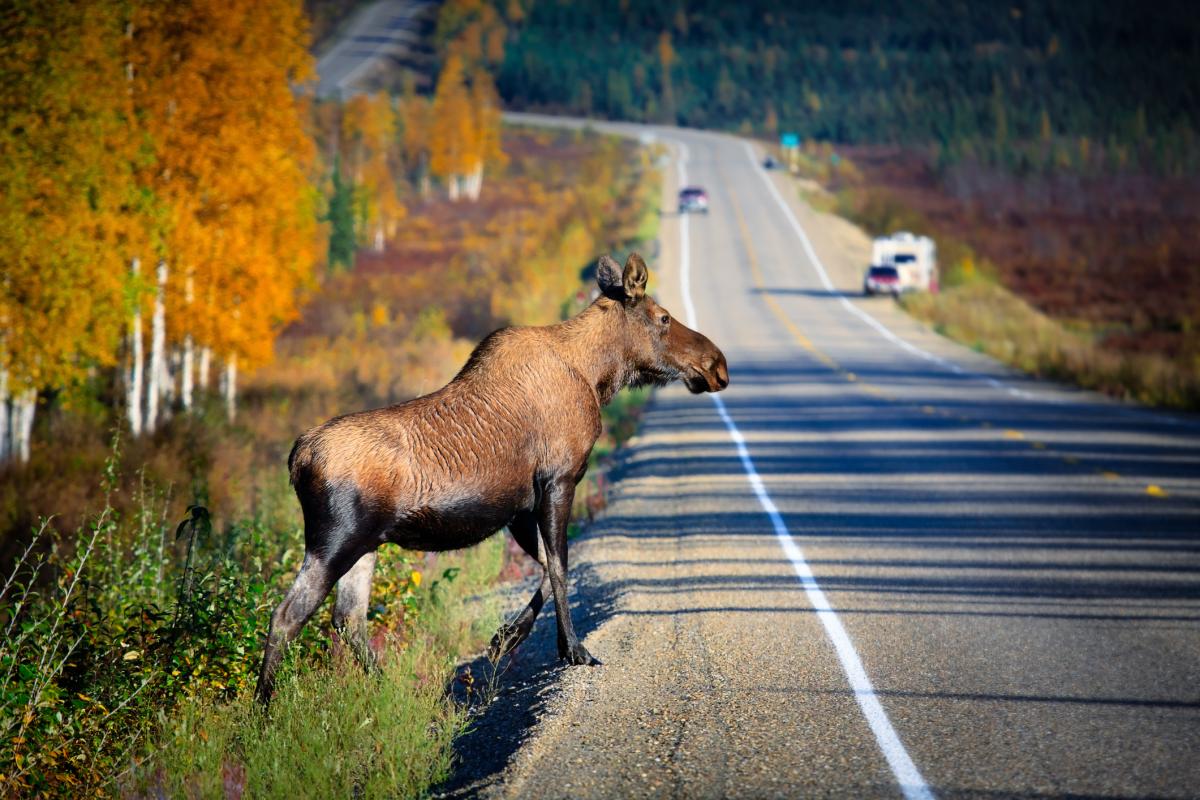This story was originally published by High Country News and is reproduced here as part of the Climate Desk collaboration.
My mother texts me four photos of a dead moose the week I leave Alaska. It is freshly hit. The pebbled pink brains fanning across the pavement have not yet grayed in the brisk autumn air. The animal will not go to waste. For the past 50 years, Alaska has been the only state where virtually every piece of large roadkill is eaten.
Every year, between 600 and 800 moose are killed in Alaska by cars, leaving up to 250,000 pounds of organic, free-range meat on the road. State troopers who respond to these collisions keep a list of charities and families who have agreed to drive to the scene of an accident at any time, in any weather, to haul away and butcher the body.
During a recent trip to Fairbanks, my hometown, I asked locals why Alaska’s roadkill program has been so successful for so long. “It goes back to the traditions of Alaskans: We’re really good at using our resources,” Alaska State Trooper David Lorring told me. Everyone I talked to — biologists, law enforcement, hunters, and roadkill harvesters — agreed: It would be embarrassing t... Read more

